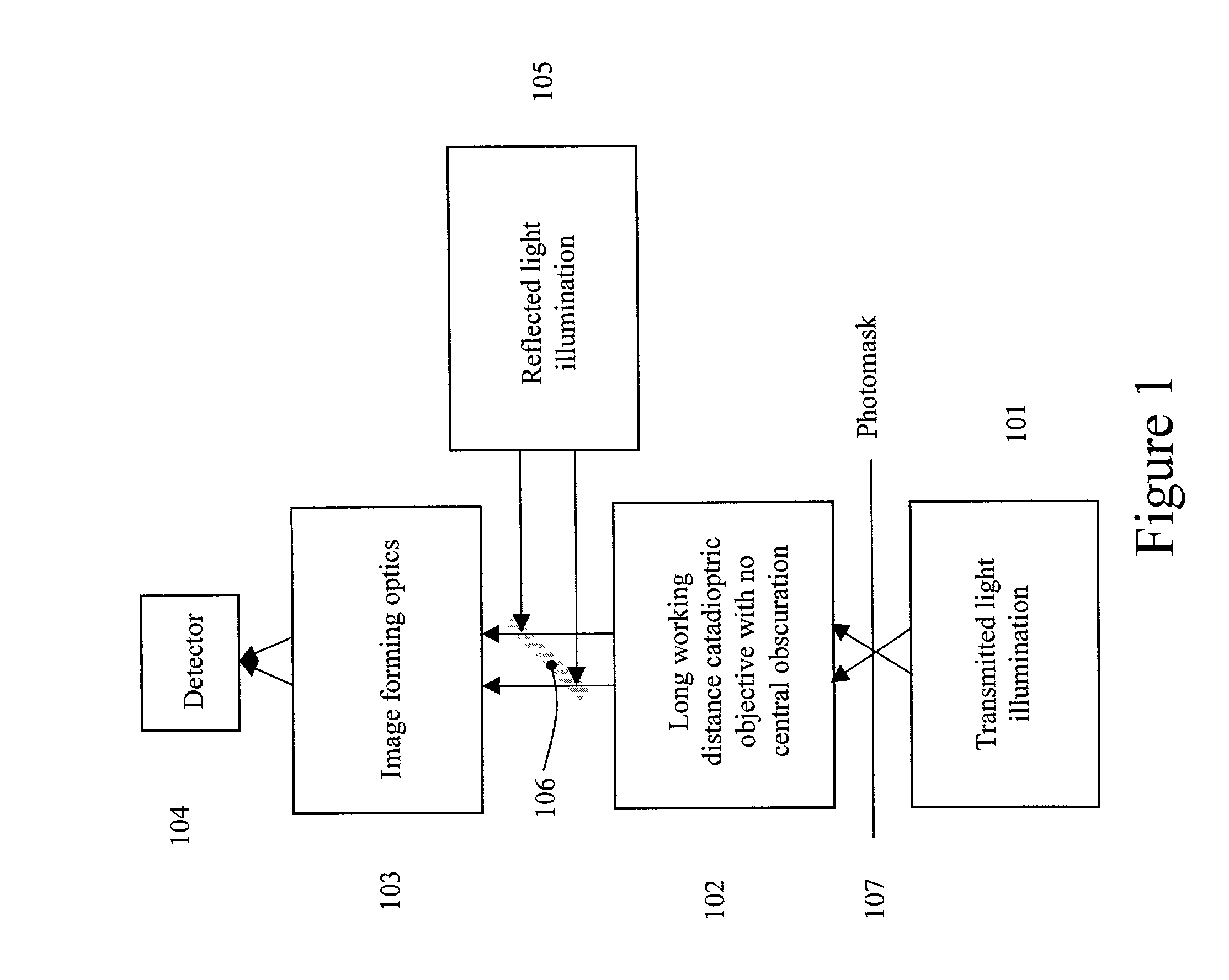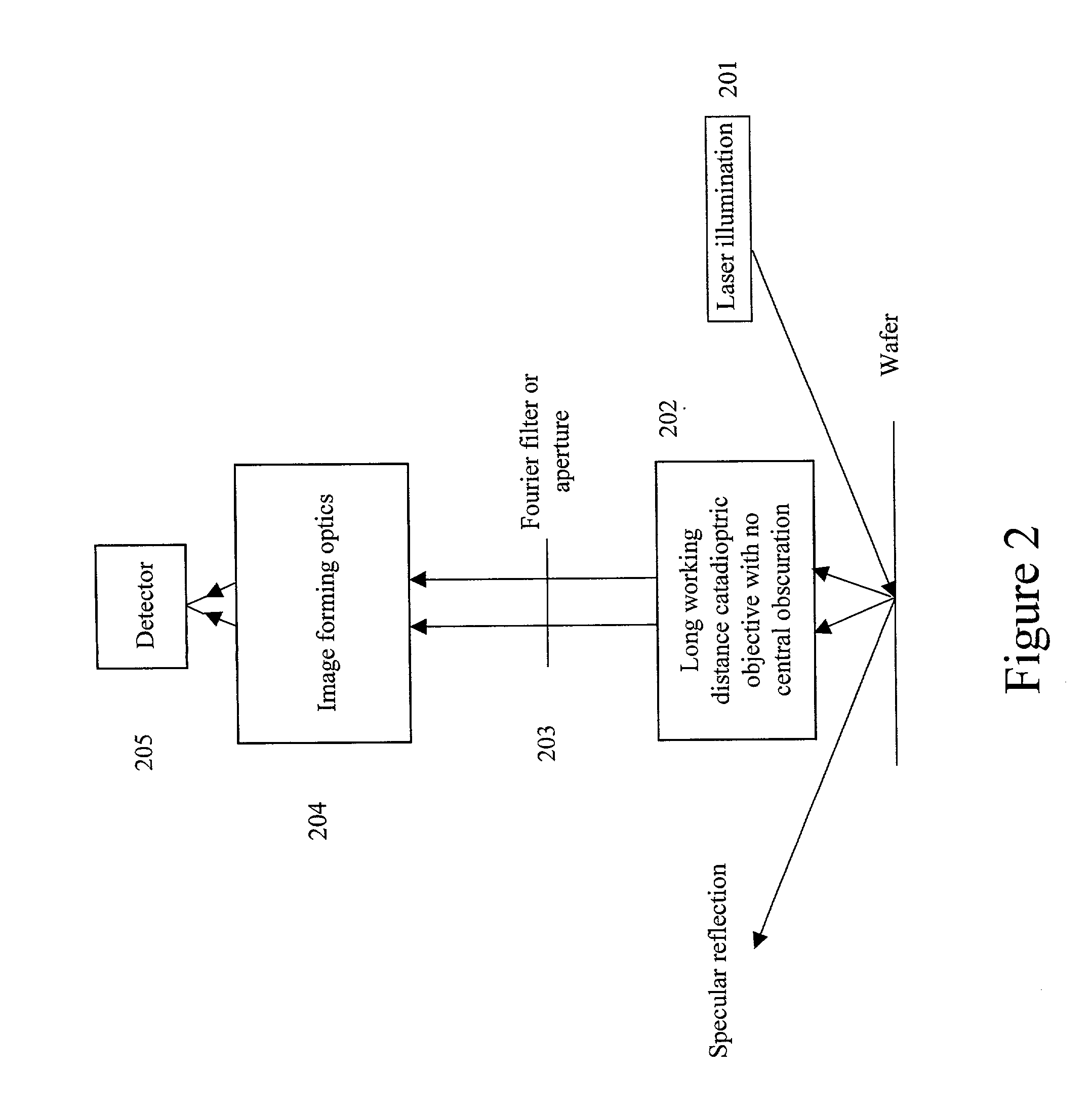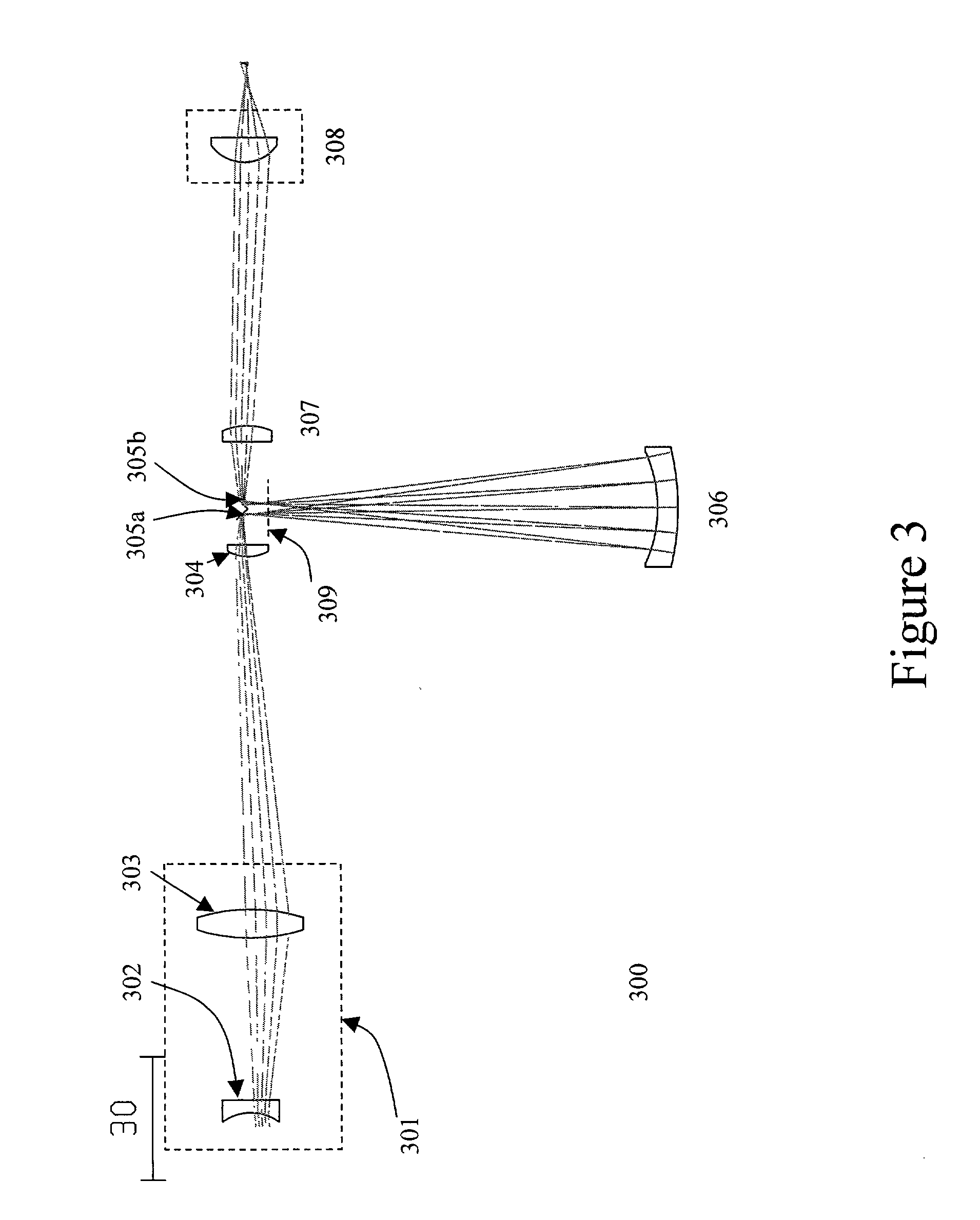Broad band deep ultraviolet/vacuum ultraviolet catadioptric imaging system
a catadioptric optical and deep ultraviolet technology, applied in the field of optical imaging, can solve the problems of difficult color correction in the uv, duv, vuv wavelength range, glass dispersion greatly increases, etc., and achieves the effect of relaxing manufacturing tolerances, increasing spectral bandwidth, and increasing spectral bandwidth
- Summary
- Abstract
- Description
- Claims
- Application Information
AI Technical Summary
Benefits of technology
Problems solved by technology
Method used
Image
Examples
second embodiment
[0066] The second embodiment is a method for laser dark-field inspection at or below 365 nm, and is illustrated in FIG. 2. The embodiment illustrated in FIG. 2 is especially suited for wafer and photomask inspection. The apparatus of FIG. 2 consists of illumination optics, such as laser illumination element 201, a long working distance catadioptric imaging objective 202, a Fourier filter or aperture 203 at the external pupil plane, image forming optics 204, and a detector 205. Catadioptric imaging designs using a single material in the configuration of FIG. 2 preferably use an illumination source having a 1 nm or less bandwidth. Catadioptric imaging designs using two glass materials are achievable when using an illumination source with greater than 1 nm bandwidth.
first embodiment
[0067] The types of illumination that can be used for this system are similar to those used in the first embodiment for bright field and ring dark field inspection. The preferred energy or light source is a laser due to its directionality and brightness. One method or apparatus for laser-dark field illumination of a semiconductor specimen is direct illumination of the specimen from outside the objective. In such an arrangement, only light scattered from the specimen is collected by the catadioptric objective. The specularly reflected beam is beyond the numerical aperture of the objective and is not collected.
[0068] Again, the long working distance imaging objective 202 is described in embodiments 3 through 8 and with respect to FIGS. 3-13. For laser dark field inspection, these designs fulfill certain basic requirements. The long working distance offered by the designs of FIGS. 3-13 simplifies delivering laser energy to the wafer in the semiconductor specimen environment from outsid...
fifth embodiment
[0096] The fifth embodiment, illustrated in FIG. 7, solves the problems of the 90 degree bend issue with respect to the Mangin mirror image relay and the internal pupil plane. FIG. 7 illustrates an in-line or straight 0.7 NA catadioptric objective employing a single glass material. The arrangement of FIG. 7 also allows for improved design performance and relaxes manufacturing tolerances. For example, the decentering of any lens element by 5 microns will cause less than one quarter wave of coma without using any compensation elements. Using element decenters and tilts as compensation elements, the tolerances become even more relaxed. The arrangement of FIG. 7 includes one bend with some lenses after the second internal image. These lenses have extremely relaxed tolerances and tend not to affect the manufacturability of the system. The arrangement of FIG. 7 also has an external pupil plane 701 for aperturing and Fourier filtering. This pupil plane is in the collimated region so it cor...
PUM
 Login to View More
Login to View More Abstract
Description
Claims
Application Information
 Login to View More
Login to View More - R&D
- Intellectual Property
- Life Sciences
- Materials
- Tech Scout
- Unparalleled Data Quality
- Higher Quality Content
- 60% Fewer Hallucinations
Browse by: Latest US Patents, China's latest patents, Technical Efficacy Thesaurus, Application Domain, Technology Topic, Popular Technical Reports.
© 2025 PatSnap. All rights reserved.Legal|Privacy policy|Modern Slavery Act Transparency Statement|Sitemap|About US| Contact US: help@patsnap.com



